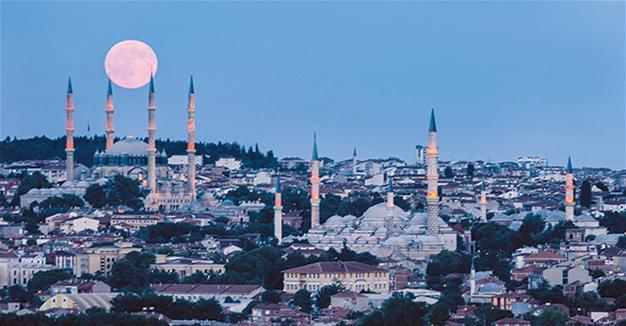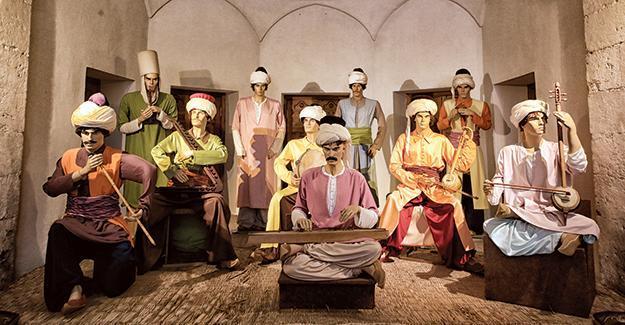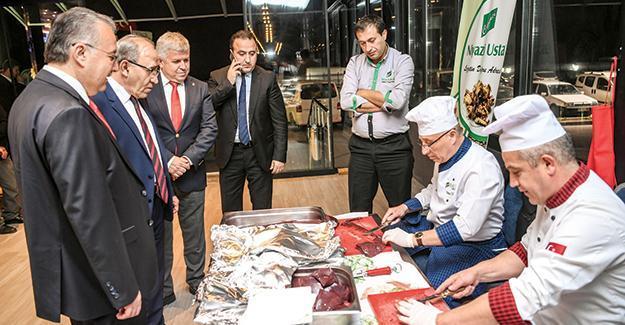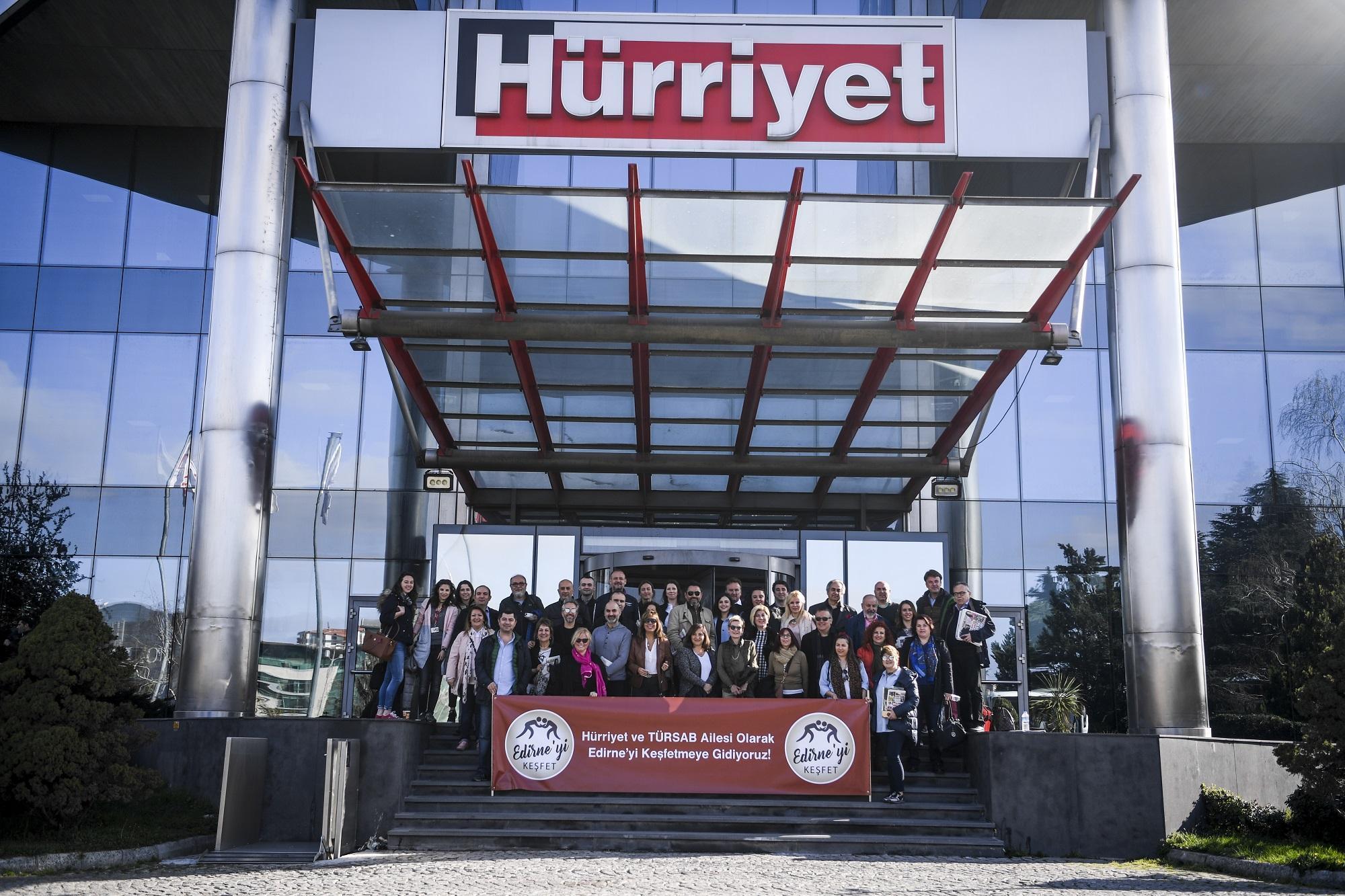Enchanting Edirne waits to be discovered
Barçın Yinanç - EDİRNE
 Edirne is just three kilometers away from Greece and 17 kilometers away from the Bulgarian border. That explains why on our first dinner during our three-day visit to the city, the repertoire of the lovely singer on stage was like a Balkan musical mosaic.
Edirne is just three kilometers away from Greece and 17 kilometers away from the Bulgarian border. That explains why on our first dinner during our three-day visit to the city, the repertoire of the lovely singer on stage was like a Balkan musical mosaic.First came “s’agapo,” one of the most beautiful love songs in Greek. That was followed by “Ederlezi,” the traditional folk song of the Romani minority in the Balkans – the version used by Goran Bregovic in Emir Kusturica’s movie “The Time of the Gypsies” made it famous.
The singer then continued with songs in Bulgarian.
“Edirne is a Balkan city; we are in Europe,” I said to myself listening to this musical mosaic.
The three-day visit was jointly organized by daily Hürriyet, the Association of Turkish Travel Agencies (TÜRSAB) and Edirne Municipality. The visit, were drew several Hürryet columnists and editors, aimed to promote tourism in the city, whose historic, geographical and cultural attractions wait to be discovered.
Despite the fact that it was one of the three capitals of the Ottoman Empire, Edirne seems to have been overshadowed by Istanbul and Bursa, the two other historic capitals. That’s a great injustice to Edirne, which has an untapped tourism potential.
It is not a coincidence that these tours, which in the past included Hatay, Mersin, Gaziantep, and Turkish Cyprus, are called “discover.” The three-day “Discover Edirne” tour was a real exploration of the city’s hidden attractions.
Edirne is known for the Selimiye Mosque. The square mosque with its single great dome and four slender minarets dominates the skyline of the city. Constructed by Sinan, the most famous of Ottoman architects in the 16th century, it is a definite must see. How can it not be, when the greatest of all the Ottoman architects called it Sinan’s best work?
But Edirne is so identified with this magnificent complex, which includes madrasas, a covered market, a clock house and a library, that it almost does injustice to the other historical riches of the city.
Local officials complain about the fact that most of the daily tourists that come to the city limit their visits to Selimiye and get back without visiting anything else.
But the city is a host to other examples of Ottoman grandeur, like the Sultan Beyazıd II complex, which had an impressive center for medical treatment.
As highlighted by UNESCO, the complex “illustrates a significant stage on the way to the modern hospital and the modern perception of patient treatment thanks to its central plan that enabled doctors to follow up on their patients easily, the acoustic system that supported treatment procedures with music and the sound of water, as well as its modern treatment methods and the medical education that was provided.”
Multiculturalism, which is also part of that Ottoman legacy, is also being revived in the city. Once home to several non-Muslim communities, the city’s 12-member municipal assembly used to consist of six Muslim and six non-Muslim representatives. A painting showing the assembly’s Muslim and non-Muslim members from 1902 adorns the wall of the municipality’s historic building.
While there is only one Jewish family left, the newly restored synagogue stands as Europe’s third biggest. It will surely be an invaluable asset for Edirne’s tourism since it is not difficult to imagine Jews from all over the world preparing for tours that will start from Istanbul, continue to Edirne and end in Thessaloniki, following the traces of their ancestors’ centuries-old history in these three cities.
In addition to the synagogue, the city has two Bulgarian churches. Unfortunately, Greeks and Bulgarians living in the border regions come to Edirne for a daily visit for shopping purposes and show little interest in what the city can offer. Most probably they are not aware of what they are missing.
“There are some tours coming from Greek cities Kavala and Thessaloniki; but they are too few to mention,” said Edirne Mayor Recep Gürkan, who complained that the city was not benefiting enough from its tourism potential.
Indeed, compared to Istanbul, it is not chaotic. While you spend a significant amount of time in traffic in Istanbul, Edirne offers the finest examples of the Ottoman legacy with much less time spent in transportation. And obviously Edirne is much less expensive compared to Istanbul.
Edirne is also an excellent choice for a weekend trip for those living in Istanbul as well, as it is just a 2.5-hour drive from the European part of the city. Spring could prove the best season since the Kakava festivities of the Roma people in May and the Kırkpınar oil wresting tournament in June offer colorful activities for the visitor.

Music, scent give peace of mind to all
One should spare time to pay a visit to the Complex of Sultan Bayezid II Health Museum in Edirne, Hürriyet columnist Melis Alphan says.
The 17th-century hospital inside the complex reflects the level of medical successes of the Ottoman Empire, she says.
Psychiatric patients were treated with music, aqua therapy and scents at the complex.
The complex, which was turned into a museum in 1997 after years of neglect, had a separate intensive care unit and a special kitchen to serve the right diet to particular patients. A larger kitchen used to serve some 250 patients.
The Council of Europe picked the facility as the best museum in Europe in 2004 and UNESCO included the museum on its temporary World Heritage List.
Edirne was one of the Ottoman capitals of health and Hürriyet columnist Kanat Atkaya says the city as a whole is the best place for a “detox for your soul” with friendly and philosophical people, great food, nature, music and history.
“All these beauties and more wait for you only two or three hours of driving away from Istanbul,”he says.

Wrestling for centuries on the same grass
Edirne is the host for the oldest sports event in the world if the Olympic Games, which was not organized for centuries, is excluded, says Mehmet Arslan, the chief editor of Hürriyet’s sports pages.
The Kırkpınar oil-wrestling tournament has been held annually, usually in late June, since 1346.
However, the world-renowned event does not bring in revenues to the city.
Annual spending for the event stands at around 5 million Turkish Liras. The main sponsor who wins the annual tender, named the “ağa,” pays around 500,000 liras. The Tourism Ministry adds 300,000 liras to it and the rest is covered from the municipal budget.
Mayor Recep Gürkan says the event is still important for the city as last year 180 Turkish and 120 foreign journalists covered it, providing a great opportunity to promote the province. The mayor now dreams of renewing the wrestling ground and building an artificial lake nearby that can hold rowing races, as well as an archery facility, Olympic pool and Kırkpınar museum to showcase the history of the event.

Multicultural city of Ottoman-era relics
Edirne, which was the capital of the Ottoman Empire for 92 years, is a great place to discover for lovers of traditional architecture, says Hürriyet travel writer Saffet Emre Tonguç, who suggests that visitors take long walks by the Tunca and Maritsa rivers and enjoy food and beverages in a tranquil atmosphere crowned by historic stone bridges.
Selimiye Mosque, which was built by the Architect Sinan between 1569 and 1557, is a landmark, but the city hosts several other Ottoman mosques such as the Old Mosque (1414), Üç Şerefeli Mosque (1447) – which gets its name from its three minaret balconies that are all different from each other – and Muradiye Mosque (1435), which boasts astonishing İznik-tile artwork.
The city is also known for The Grand Synagogue of Edirne, which was totally burned in 1905 and re-erected on the orders of Ottoman Sultan Abdulhamit II. The synagogue, which remained empty after 1934 when Jews were forced to leave the city, was reopened in 2015. The kervansarai in Edirne was also built on the orders of 16th-century Ottoman Sultan Süleyman the Magnificent and today serves as a hotel.

Two ‘masterpieces’ of rich Edirne cuisine
Fried liver and meatballs are the two top dishes one can enjoy in Edirne, Vedat Milor, one of Turkey’s most prominent food critics, has suggested, while noting that it’s a difficult task to pick between them.
“It is pleasing that the high standards in both liver and meatballs have been secured,” he says, highlighting Osman for the meatball and Kazım for the liver.
“The meatball is plump and it is not sinewy or too fatty,” he says. The liver, he says, should be consumed very fresh, which is always a possibility in Edirne.
“A good liver chief is trained over 20 years – just like a sushi chef,” he says. “Both liver and meatballs here are gastronomic masterpieces.” Hürriyet food columnist Müge Akgün highlights other tastes in Edirne. Almond paste, or marzipan, is one of the historic tastes that found its way into the Ottoman palace. Edirne’s cheese has also been registered as a geographic trademark.


















